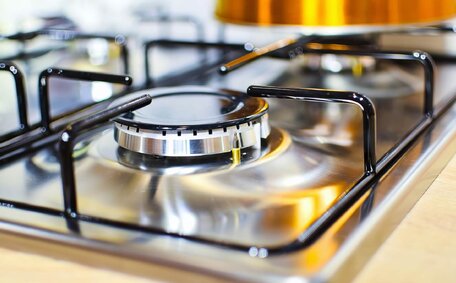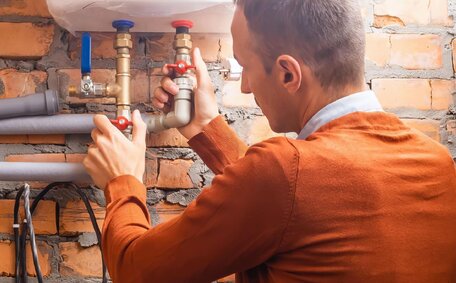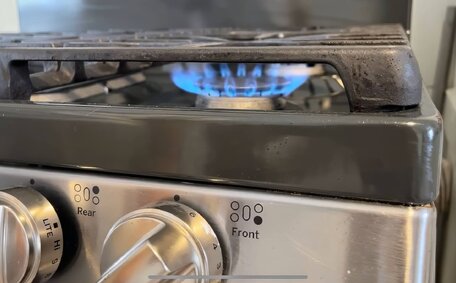Understanding Pipe Repair Techniques: Relining vs Patching
Over time, plumbing pipes under homes and businesses can crack, leak or become blocked by invasive tree roots or debris. Drain pipe repairs aim to restore flow and integrity of a damaged pipe without the major disruption and expense of full pipe replacement. Modern methods like pipe relining and patching can be used as effective alternatives that limit digging, disturbance, and costs.
Pipe relining secures a flexible tube inside the damaged pipe, mending it from within. Contrastingly, pipe patching involves sealing defects externally with epoxy resin. Both methods prevent extensive excavation or full pipe replacements.
Choosing whether to use pipe relining or patching pipe requires understanding each technique’s suitability, durability, disruption factors and costs for different pipe issues. Weighing these key differences allows you to make the optimal and most cost-effective choice for your situation.
What is Pipe Patching?
The method of Pipe patching entails applying an epoxy resin compound directly to the damaged sections to seal cracks, holes, or leaks. It is a localised repair technique used where pipe damage is only small and limited to specific areas.
Specialised compounds bond chemically, providing a durable seal. The resin is manually applied and moulded to the affected pipe, ensuring a water-tight repair.
Pipe patching enables repairs without the need to replace the full length of piping. It is less invasive with reduced digging compared to a full pipe replacement. This makes patching a quick, convenient, and cost-effective choice for minor pipe damage affecting restricted plumbing areas.
How Pipe Patching Works
Pipe patching begins with a camera inspection to identify damaged areas and assess if patching is suitable. Skilled technicians inspect for access issues and identify the areas in need of repair.
To apply the patch, technicians expose the damaged section by carefully excavating just enough soil to clean and dry the pipe area. After preparing the surface, they manually mould an epoxy resin compound directly over cracks, holes or leaks in the pipework.
The resin mixture chemically reacts and hardens to form a bonded, watertight seal for cracked leaking sections, isolating the damage. Technicians may install a protective sleeve then backfill the soil once the patch has fully cured.
Since patching focuses on specific damage, it necessitates less invasive work than relining or complete drain replacement, making it ideal for small, easily accessible pipe issues.
When to Use Pipe Patching
Pipe patching is ideal when pipe damage is isolated to small areas such as cracks, holes, fractured or corroded sections. It allows quick repairs targeting the specific problem locations without replacing entire pipe runs.
Early intervention with patching can halt the progression of damage. Patches are optimal for repairing sections up to 2 metres, as larger repairs risk extended curing times and potential failure.
Key situations where pipe patching works well include a broken pipe:
- Pinhole leaks or small cracks allowing water to seep from pipes
- Small holes and fractures caused by tree roots or ground movement
- Localised corrosion and wear in older metal pipes
- Sealing joints between pipe fittings and connections
Patching offers a cost-effective repair for minor pipe damage confined to accessible locations. It limits digging so is less disruptive than pipe relining or full drainage replacement in these instances. Keeping on top of small pipe problems before they worsen makes patching a useful preventative maintenance choice.
What is Pipe Relining?
Pipe relining is a trenchless drain restoration process that creates a new pipe by inserting a resin-saturated liner inside the damaged old pipe.
Technicians utilise drain cameras to check the pipe’s condition and confirm if relining is suitable. They guide the lining material through an entry point and inflate it to adhere to the existing pipe’s interior.
The liner, once cured, forms a seamless, corrosion-resistant internal pipe, renewing drainage functionality without significant excavation.
Relining is a non-disruptive method for repairing widespread damage, such as cracks, fractures, and root infiltration, with lower failure rates than patching.
The Pipe Relining Process
The pipe relining process consists of several key steps:
- Initial CCTV drain inspection. Technicians insert a camera on a flexible cable through an access point like an overflow gully. They examine pipe interiors to locate any damage and measure the length and diameter to Customise the liner material.
- Pipe cleaning involves the use of specialised water jets and equipment to thoroughly cleanse the pipe interior by eliminating debris, roots, and grease to ready the surfaces.
- Curing process. Hot water or steam circulates for several hours. This activates the thermosetting resin, causing it to harden and permanently bond to form a smooth, joint-free and corrosion-resistant new pipe wall inside.
- Finishing procedures. Once cured, the ports and gullies are reconnected, a final CCTV check confirms a successful lining and trenches are filled in. Your drainage system is now restored.
Relining rejuvenates pipes affected by extensive deterioration without the need for trenching, mitigating the risk of future damages and leaks.
Ideal Situations for Pipe Relining
Pipe relining is the preferred solution for extensive damage that affects large sections or entire pipe systems.
It works well for issues like:
- Major leaks, cracks, fractures or holes affecting over 2 metres of pipework
- Complete broken pipes where water flow is fully lost
- Widespread corrosion and deterioration in old pipes
- Root intrusion present along lengthy sections
Relining is especially suited to areas under heavy traffic, such as main roads or commercial properties, as it forgoes substantial excavation.
The seamless pipe lining moulds adapt better to difficult-to-access areas when repairing uneven surfaces and complex fittings, compared to rigid patches. It also helps strengthen older pipes and prevent future damage or leaks better than patching small isolated areas.
For major drain repairs over long pipe runs, relining is a proven long-lasting solution. It negates the need to repeatedly patch worsening sections or undergo major pipe replacement projects.
Comparing Pipe Patching vs. Pipe Relining
Homeowners and businesses considering repairs for pipe leaks, cracks, or blockages should compare pipe relining and patching to choose the most suitable repair approach.
Pipe Patching Advantages
- Lower cost for minor isolated damage less than 2 metres
- Much less invasive as only repairs specific damaged locations
- Rapid repairs with minimal digging disruption
Pipe Relining Advantages
- Long-lasting solution for extensive damage over long pipe runs
- Prevents future leaks and deterioration
- Smooths pipes and resists corrosion
For minor damages like pinhole leaks, consider patching; relining is more effective for broad-scale damage. Factor in excavation, costs, and failure risks.
While patching can be cost-effective upfront, it might require additional repairs if the condition worsens. Relining serves as a more comprehensive preventive measure against repeated problems.
Learn more about professional input to determine which method suits your situation best. This prevents spending more down the track if the incorrectly chosen option fails prematurely.
Cost Analysis
When weighing up pipe repair options, cost often becomes a key deciding factor.
Pipe patching provides a more affordable solution for minor isolated issues. Patching short sections under 2 metres typically costs $200-$800.
Material costs are lower with patching, as it requires only a modest amount of epoxy and incurs minimal labour fees due to the straightforward process and reduced excavation.
Relining requires extensive materials like thermosetting resin and woven lining fabrics to reline entire pipe systems, increasing costs. The comprehensive process also demands intensive labour. Most jobs range from $2000-$8000, sometimes more for very large plumbing layouts exceeding 100 linear metres.
Relining averts repeated failures and additional costs from escalating damage. Patching may need to be reapplied should surrounding areas degrade, whereas relining offers a more enduring solution.
Consider a professional evaluation of your property’s specific needs when comparing the costs of pipe patching and relining.
Longevity and Durability
When assessing longevity, pipe relining typically offers greater durability than patching isolated areas.
Pipe patches have a lifespan of typically 10-20 years. But over time, surrounding pipe areas may continue worsening, requiring repeated repairs. Relined pipes have an expected 50-100 year lifespan since the process renews entire systems.
Patches offer a firm seal but are less resistant to ground movement or root ingress compared to the more adaptable relining materials. However, patches adequately handle minor leaks in stable environments.
Relining provides superior durability for extensive damage by smoothing internal pipe walls and resisting corrosion, leaks and blockages. It better suits high-traffic locations and areas prone to ground movement or tree root damage.
Technicians consider soil conditions and pipe age to recommend the most robust repair method. While relining typically offers longevity, patching is suitable for minor, stable leaks.
Assessing Pipe Damage
Determining the right pipe repair technique requires professional drainage assessments. Technicians use drain cameras for detailed inspections, locating damage and measuring it precisely.
Signs indicating pipe patching suitability include:
- Pinhole leaks or minor cracks allowing water to escape from pipes
- Small holes or fractures under 2 metres long
- Corroded sections concentrated in one area
Pipe relining is recommended when:
- Extensive fractures, cracks or breaks are present along over 2 metres of piping
- Entire sections show corrosion wear from age and chemical exposure
- Root invasion is detected along lengthy portions of pipework
With detailed camera analysis, we identify damage types and levels, advising whether patching or relining offers the most viable and long-lasting drain repair solution.
Maintenance Tips for Repaired Pipes
To extend the longevity of repaired pipes, proper maintenance is crucial regardless of whether patching or relining methods were used.
We recommend the following tips:
- Arrange regular drain inspections every 2 years using CCTV cameras to monitor repaired areas and catch any new leaks early.
- Avoid planting trees with invasive root systems near drainage lines, as roots can return and damage repaired pipes.
- Pour monthly treatments like copper sulphate or enzyme cleansers down drains to prevent grease buildup and keep water flowing freely through repaired pipes.
- Ensure downpipes and gutters are cleared of leaf litter to prevent debris accumulation blocking repaired drains.
- Upgrade old appliances like dishwashers and washing machines to modern water efficient models less likely to overload patched or relined plumbing.
Well-maintained systems optimise the lifespan of a repaired blocked drain. Ask our technicians about suitable maintenance plans when arranging patching or relining to safeguard drainage investments.
Environmental Impact
Trenchless pipe patching and relining significantly reduce environmental impact by avoiding extensive excavation and the ensuing landfill waste of soil and construction materials.
Minimising digging protects surrounding vegetation and tree roots from damage, better preserving green spaces around your home. With less heavy machinery required, relining and patching also reduce carbon emissions from truck transportation and digging equipment compared to full drainage replacement.
The durable repairs from patching and relining also conserve resources long-term. Patched pipes last over 20 years while relined drains effectively function new for 50-100 years. Avoiding recurring repairs reduces waste, energy use and environmental impacts for decades.
For homeowners and businesses focused on sustainability, pipe patching and relining should be top considerations for their low disturbance and compatibility with landscaped or heritage-sensitive areas, offering widespread environmental advantages.
Conclusion: Making Informed Pipe Repair Decisions
When faced with pipe damage, understanding the key differences between patching and relining allows informed repair choices best suited to your situation.
Pipe patching offers a fast, affordable fix for isolated leaks or cracks less than 2 metres. Pipe relining provides long-term protection by fully restoring entire pipe systems where extensive deterioration exists.
Weigh up unique factors like repair costs, durability, longevity, disruption and environmental impact. Seek professional drain assessments to determine which trenchless technique works optimally.
For reliable advice on the right no-dig pipe repair method for your needs, call us on 1300 349 338 or email [email protected] to discuss options. Our drainage specialists provide recommendations maximising value, convenience and lasting results.






